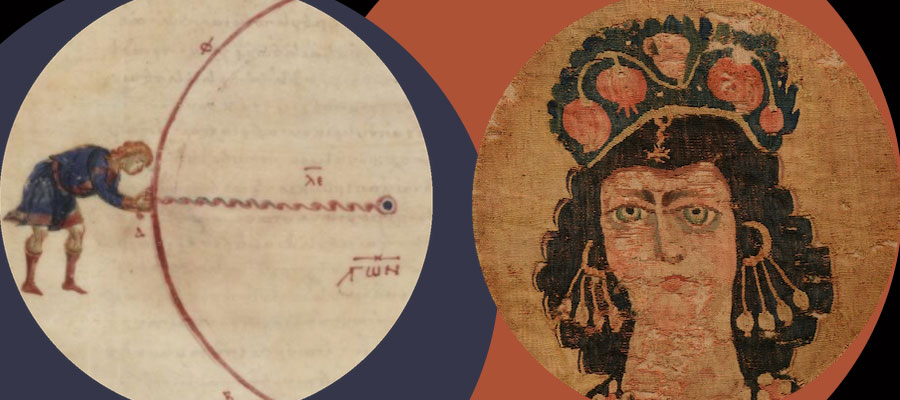Private Worship and Domestic Religion in Byzantium (Panel 4A)
Organized by Fotini Kondyli, University of Virginia
Byzantine religious activities are mostly discussed in relation to church or monastic settings, while the range of domestic religious practices remains understudied and not fully understood. Still, domestic activities connected to household life cycles, healing, protection, feasting, veneration of saints and ancestors are fundamental religious expressions and can expand our understanding of Byzantine religious practices beyond “official” and state worship.
In organizing a session on domestic and private worship, we are interested in questions on the role of domestic religion in shaping collective ritual and social behaviors; in its intersection with state and public religious expressions; its impact on other aspects of Byzantine society including urban topography and infrastructure, burial practices, and craft production. In doing so, we discuss the wide range of textual and material evidence that can shed light to the people, spaces and types of rituals connected to domestic religious practices. A main objective is to identify religious activities that informed households’ social and spatial relations as well as daily activities, such as food production and hygiene, and consider their focal points within and around the Byzantine house. Similarly, we turn our attention to domestic objects that participated in religious activities and further enhanced devotional practices through their materiality, use, sensory engagement, and imagery. We also address the gender dimensions of household religion, particularly women’s religious activities and their connection to other roles that they assumed within their households and communities, including caregivers, healers, midwifes. Such an emphasis on the interaction between groups, spaces and objects related to domestic religion can offer a more expansive approach to Byzantine religious practices that moves us beyond the limits of organized religion and is more sensitive to diverse religious experiences, including those of non-elites. As such, the study of domestic and private worship allows new insights in the formation and expression of socioeconomic and political identities through participation in religious activities.
Diagrammatic Thinking in Byzantium: Between Narrative and Rhetoric, Image and Object (Panel 7A)
Organized by Justin Willson, The Cleveland Museum of Art & Case Western Reserve University, and Merih Danali, Wake Forest University
In Byzantine manuscripts, diagrams often feature at points of tension in a text or argument. Writers resorted to simple line drawings, in combination with targeted rhetorical moves, graphs, or scientific forms of explanation, to elucidate an idea that might otherwise be lost to the reader. Lying midway between a painted depiction and an abstract geometrical idea, diagrams embodied an intuitive force, given their coherence and palpable manifestation of a concept. However, precisely for these reasons they present numerous challenges to the art historian, raising questions about how to interpret and categorize this large class of visual imagery.
This panel, which is the first of its kind, approaches Byzantine diagrams from a variety of angles, building on exploratory studies of visual thinking in Medieval Studies in recent years. Using cross- disciplinary analytical frameworks, the authors present a holistic understanding of Byzantine visual culture, where observations from the history of science, rhetoric and philosophy, musical theory, and military logistics converge in a description of imagery that transcends the bounds of the icon and illuminated miniature. Taking on board a range of literary genres and codicological methods, the conversation will also look outwards to the secondary literature on Western medieval diagrams, asking how the interpretive heuristics of Byzantinists might add to those of pre-modernists of Europe and the wider Mediterranean world. Questions that presenters will explore include how diagrams shed new light on Byzantine pictorial strategies for evoking the sense of hearing; the relation between narrative literary modes and the transition between two- and three-dimensional forms of representation; a use of color that strikingly departs from Iconophile theories of the icon; and classical sources for logical and rhetorical diagrams that model uniquely Byzantine modes of exegesis.
